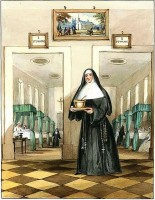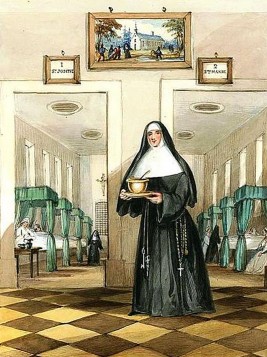Life in Montréal
Historical Facts
In the days of the streetcars...
It wasn't always easy to get around in mid-19th century Montréal! In May 1861, the Montreal City Passenger Railway Company was incorporated in order to build and operate a railway system in the streets of the parish of Montréal! The first line was operational the following year, allowing people to climb aboard a streetcar pulled by horses, which ran along Notre-Dame Street between Faubourg Québec (just east of present-day Old Montréal) and Place d'Armes. A ride cost 5 cents, a considerable sum for workers whose weekly wages averaged $7!
At first, this service, while practical, wasn't very efficient... The conductor stopped the streetcar at the passengers' request, allowing them to do their shopping or chat with acquaintances. While pleasant, the service was forced to adapt in response to complaints from certain users. In 1863, more than a million passengers travelled along the various lines, most notably on McGill and Sainte-Catherine streets and along Saint-Laurent Boulevard. The service also adjusted to winter weather conditions by swapping rail streetcarts for sleigh-trams, with a bit of straw on the floor to keep passengers warm, and a couple of added horses in front.
With the advent of electricity, in 1892, came the first electric streetcar. Horse-drawn service disappeared within a few years... The city's public transit system has certainly come a long way!
Source: Prévost, Robert (1984). Il y a toujours une première fois, Éditions internationales Alain Stanké, Éphémérides, 390 pages.
The Château Ramezay Museum : 125 years of history
On May 1st, 1895, the Antiquarian and Numismatic Society of Montreal moved into the venerable Château Ramezay building, on Notre-Dame Street, with a goal of transforming it into a museum. This iconic Old Montréal building owes its name to the Governor of Montréal, Claude de Ramezay, who built his stone home on the site in 1705; it was the most beautiful home in the city at the time, at three storeys and with four chimneys. A few decades later, the building became the property of the French West India Company, which demolished the original building and, in 1757, constructed the building we know today, except for the turrets, which were added in the early 20th century.
The transformation from château to museum allowed this key heritage site in Old Montréal to be preserved. Over the years, well-known figures resided in the building, including Benjamin Franklin in 1776, and it also housed the governments's offices between 1844 and 1849, when Montréal was capital of the United Canada. The vast collections of objects and documents that the Society's antiquarians amassed in the 19th and 20th centuries are a valuable legacy that Château Ramezay, the current museum and historic site, has made accessible to the public. We are proud to highlight this legacy and join our colleagues at the Château on Notre-Dame Street in blowing out its 125 candles!
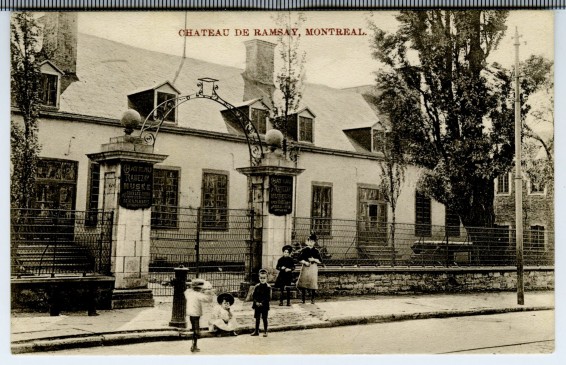
Barber Surgeon: a historical profession
Barber and surgeon: two essential professions long recognized as being very important, and perhaps even more so right now! But did you know that, long ago, both professions were considered as one? Master surgeons were as adept with a razor as they were with a lancet! Barber surgeons did not simply limit themselves to shaving their customers, they also carried out little surgical procedures—like bloodletting… and pulling teeth! In April 1658, Jean Madry, a surgeon in Québec City, was made His Majesty’s first barber surgeon authorized to practice this occupation in New France. According to sources, he was a good surgeon.
The two-colour barber poles sometimes still seen today are meant to recall the colours of blood and of bandages.
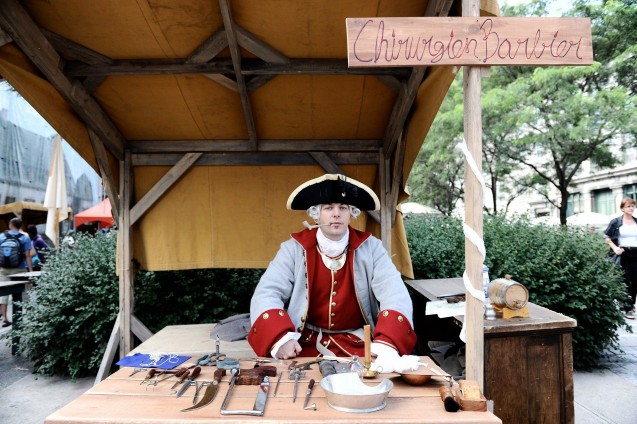
Montréal’s First Water Main
On April 8, 1801, Simon McTavish and his associates formed the Company of the Proprietors of the Montreal Water Works in order to supply the city with running water. Along with Philadelphia, Montréal became one of the first cities in North America to be equipped with a water supply system. The company created the city’s very first water main with the installation of wooden pipes that ran down from the western summit of Mount Royal, where water sources were located. The large drinking water reservoir built on Mount Royal in the mid-19th century was named after McTavish, in honour of the water works’ pioneering founder. The wastewater disposal network—or the sewer system—was introduced on a large scale after the construction of the water network.
To learn more about water management throughout the city’s history, we encourage you to try the "Water Ways” educational activity, perfect for 5th and 6th grade students!
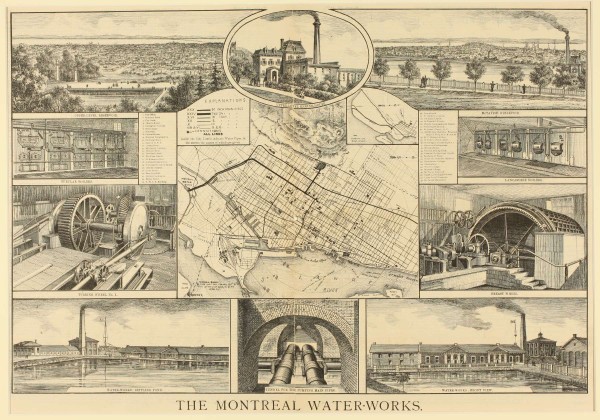
The role of caregivers, since 1656
At a time when the role of caregivers has become more crucial than ever, the Museum would like to sincerely thank the entire hospital sector and its people, who are helping us get through this difficult period. We would also like to highlight the immense contribution of the congregations of hospitaliers, who were central to the development of the health care system in Québec and Montréal society.
On March 31, 1656, an act was passed in Paris between the associates of the Société de Notre-Dame de Montréal, represented by Paul de Chomedey de Maisonneuve, and the Religious Hospitallers of St. Joseph in La Flèche, preparing for the very first religious hospitaliers to be sent to Montréal.
Three came to lend a helping hand to Jeanne Mance, the administrator of Hôtel-Dieu: Judith Moreau de Brésoles, Catherine Macé and Marie Maillet Leaving La Rochelle in July of 1659 aboard the Saint-André, they arrived in Montréal three months later. These women—and all of their successors over the centuries—provided essential medical service to Montrealers and indigenous people. These educated, devoted and religious hospitaller nuns laid the groundwork for our public health care system.
